Tuva, officially known as the Tyva Republic, is a region of Russia located in southern Siberia. This gallery offers you examples of its beautiful nature, as well as a taste of its unique culture and customs.
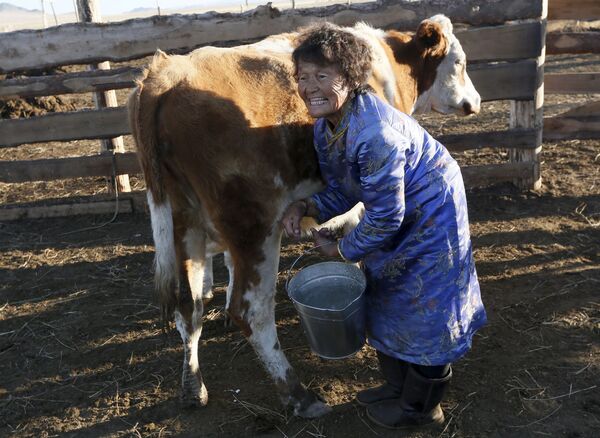
Sendin Ondar, 77, the wife of herder and farmer Stai-ool Ondar, shouts to a woman while milking a cow at their family farm located near Cheder Lake outside the village of Kur-Cher in Tuva Region, Southern Siberia, Russia.
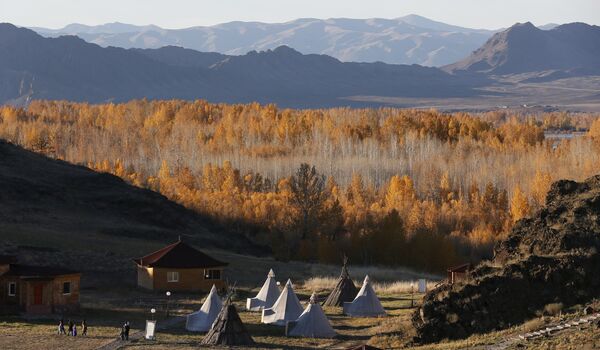
People visit an ethno-cultural complex in Aldyn Bulak at sunset on the bank of the Yenisei River outside the village of Ust-Elegest in Tuva Region, Russia.
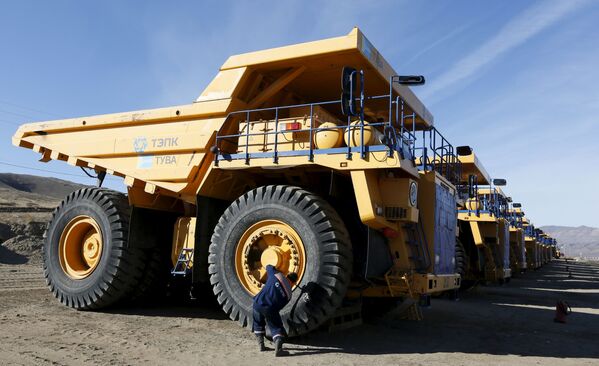
An employee services a 130-metric ton BelAZ dump truck owned by the Tuva Energy Industrial Corporation at the Zapadny coal opencast colliery of the Elegestskoye coal deposit outside Ust-Elegest village, Tuva Region, Russia.
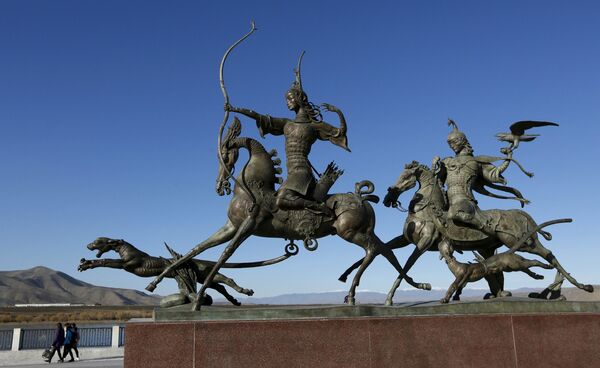
People walk past cast bronze sculptures, created by Russian Buryat artist Dashi Namdakov on an embankment of the Yenisei River in the town of Kyzyl, the administrative centre of Tuva region, Southern Siberia, Russia, October 7, 2015. Dashi Namdakov is a representative of Buryats, native people of Siberia who live and work in Britain and Italy; they cast bronze, silver and gold sculptures based on a symbiosis of the national traditions of nomad Buddhists, Western European myths and classical art, according to local media. Tuva is inhabited by Tuvans, historically cattle-herding nomads, who nowadays practice two main confessions - Buddhism and Shamanism. Picture taken October 7, 2015.

Herder and farmer Stai-ool Ondar (L), 77, and his wife Sendin Ondar, 77, pose for a picture with portraits near a yurt at their family farm, located near Cheder Lake outside the village of Kur-Cher in Tuva Region, Russia.
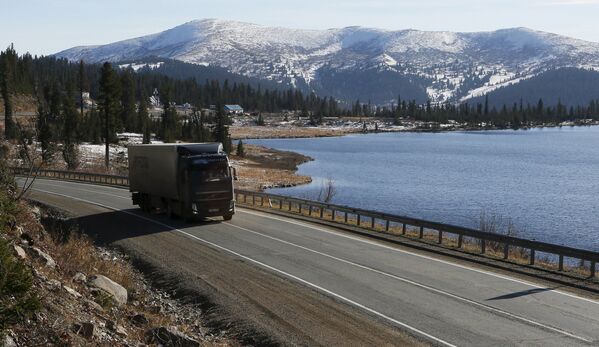
A truck drives along the M54, or Yenisei Highway, in the Western Sayan mountains along the bank of Oyskoye Lake near an administrative border with Tuva Region south of Krasnoyarsk.
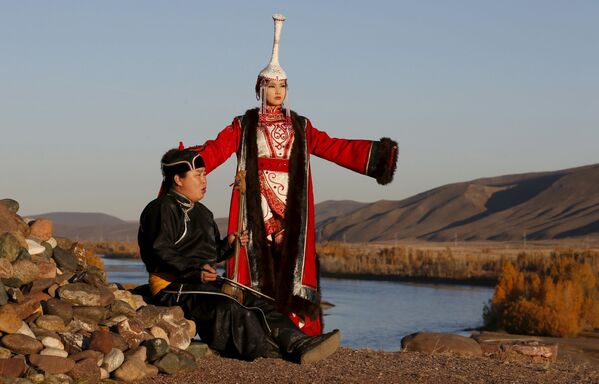
Master of throat singing (or Khoomei) Aikhan Orzhak (L) and model Choigana Kertek, dressed in traditional costumes, perform at sunset at the Aldyn Bulak ethno-cultural complex on the bank of the Yenisei River outside the village of Ust-Elegest, Tuva Region.
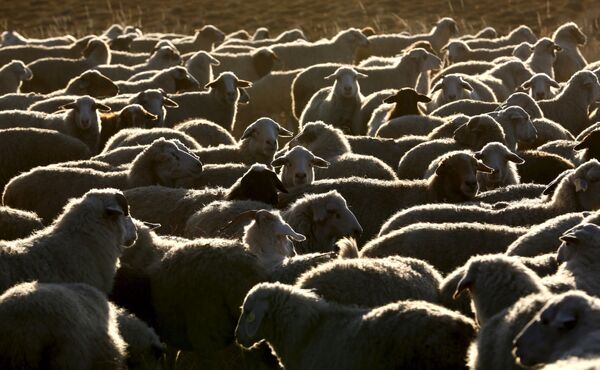
A herd of sheep and goats gathers near a family farm near Cheder Lake outside the village of Kur-Cher in Russia's Tuva Region.
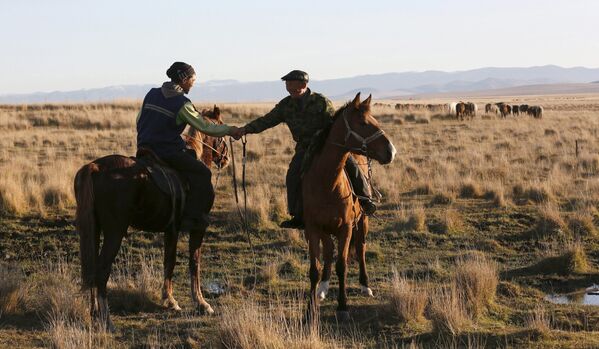
Herder and farmer Stai-ool Ondar (R) shakes hand with his nephew Mengi Mongush near their family farm, located near Cheder Lake outside the village of Kur-Cher in Russia's Tuva Region.
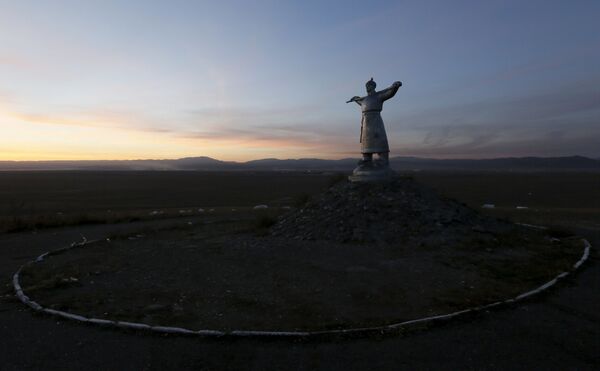
A sculpture of Arat, a Tuvan cattle breeder, is seen in the steppe outside the town of Kyzyl, the administrative center of Tuva, Russia.
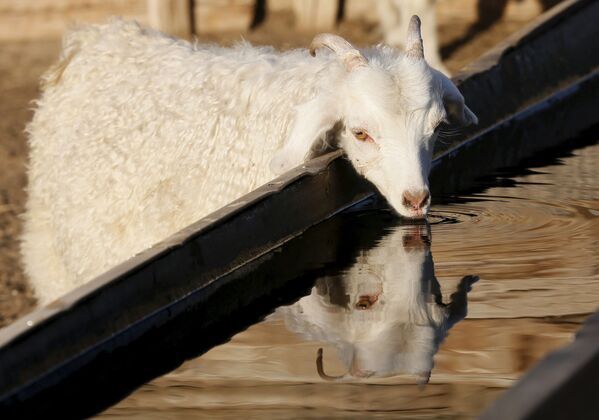
A goat drinks water at a farm near Cheder Lake outside the village of Kur-Cher in Tuva.
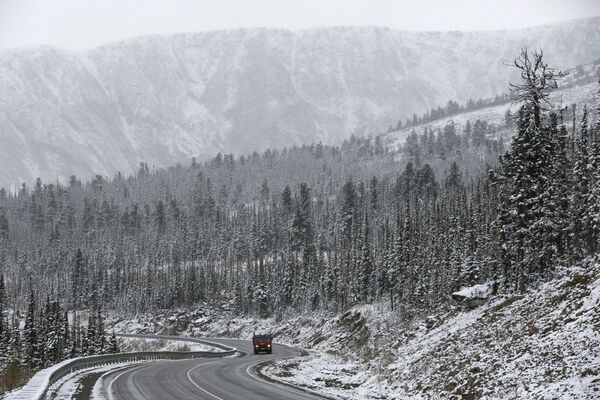
A truck drives along the M54 "Yenisei" highway during a snowfall in the Western Sayan mountains in Southern Siberia near an administrative border with Tuva.



